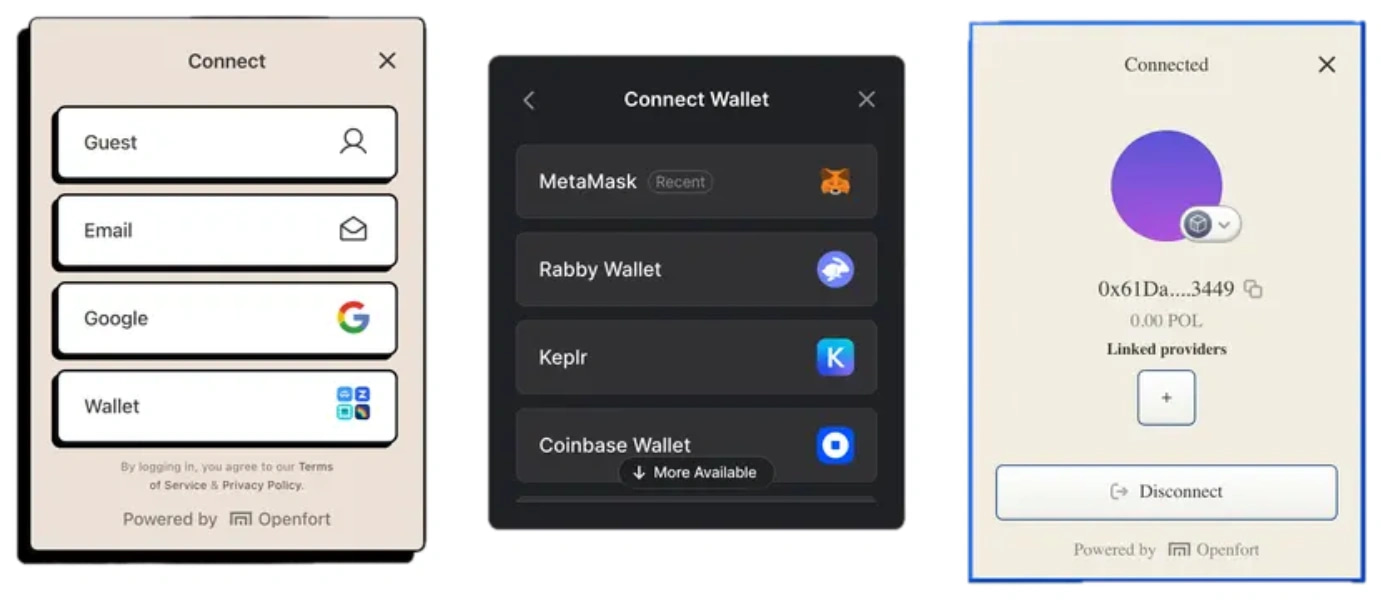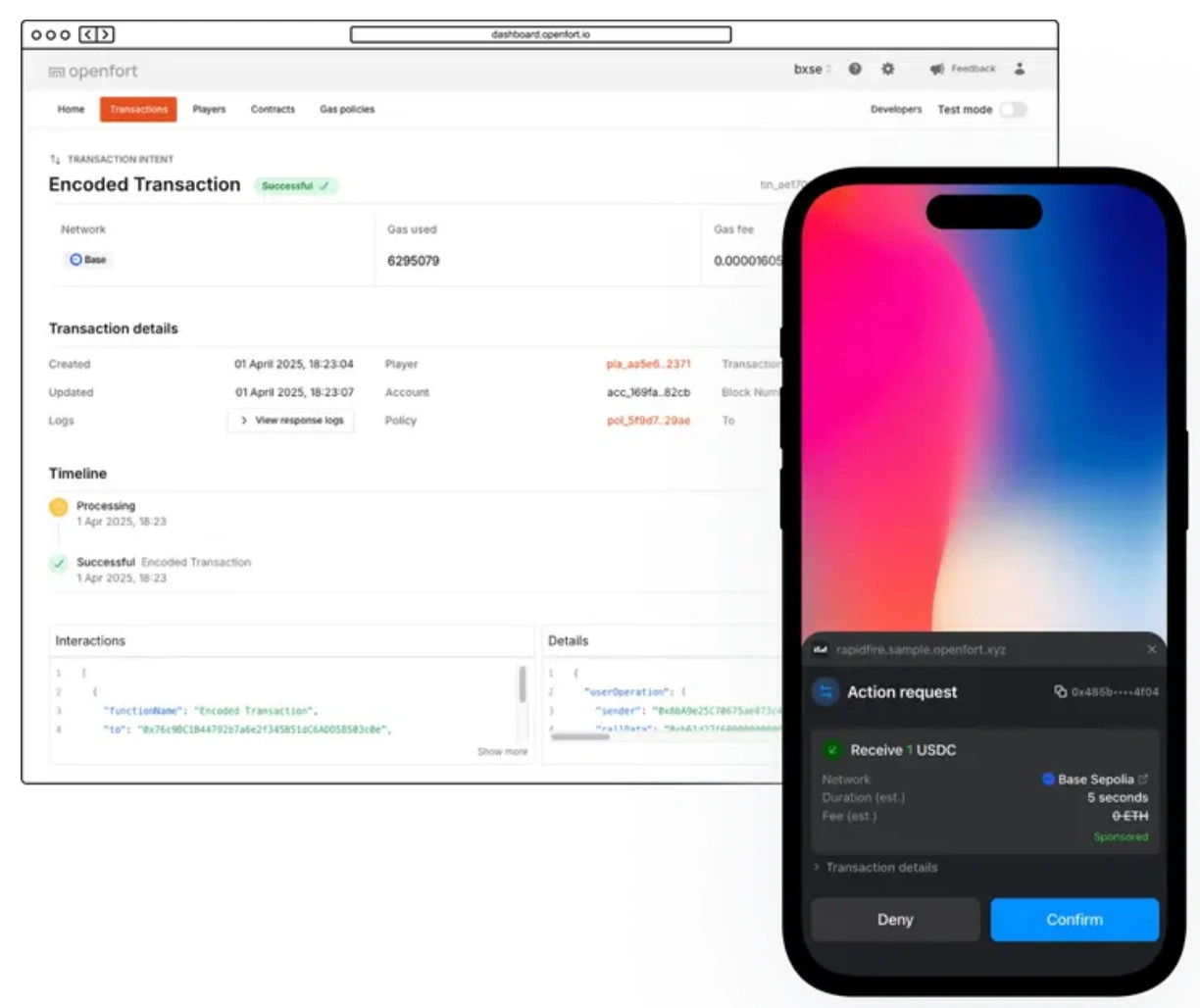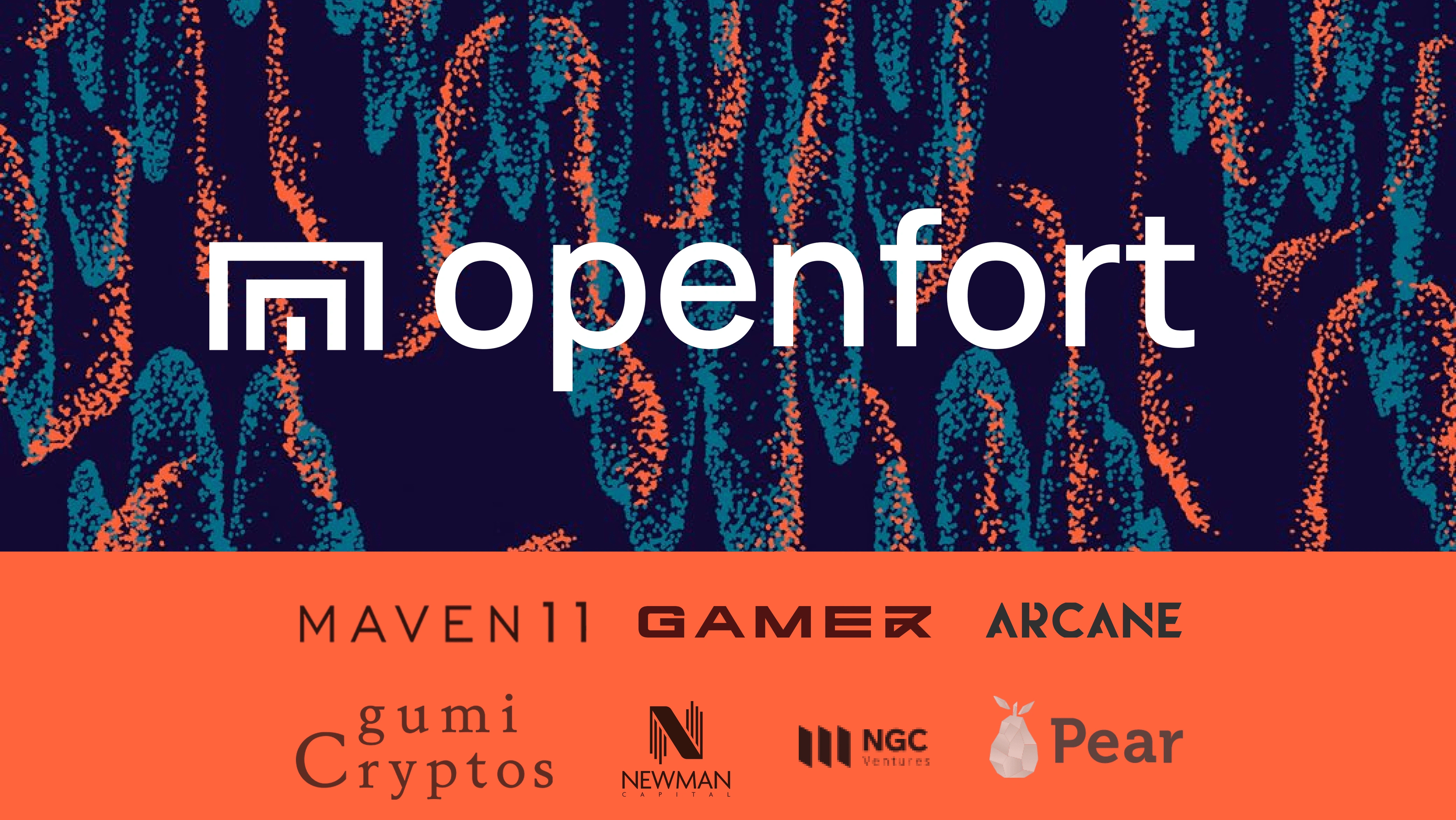Read
Edit
History
Notify
Share
Openfort
Openfort is as an open-source alternative to wallet infrastructure solutions. The core offerings—Openfort Kit, Invisible Wallet, and Cross-app Wallet—are designed to facilitate the integration of wallet functionality, intuitive onboarding, and flexible user journeys for various applications or ecosystems.
Overview
Established in September 2022 by siblings Joan and Jaume Alavedra, Openfort seeks to provide a suite of APIs tailored to facilitate blockchain account interactions. It presents itself as a wallet-as-a-service solution, supporting multi-chain accounts, gas sponsorship, and pop-upless blockchain interactions, alongside flexible ownership features.
With its first public beta launch in April 2023, Openfort attempts to streamline onchain asset interactions, with the goal of enabling rapid game launches, scalable growth, and workflow automation. Developers can utilize Openfort to create API-based integrations, potentially reducing engineering efforts while benefiting from unified accounts and gas sponsorship. The platform incorporates various technology standards, including gasless transactions and NFTs as smart wallets.
Openfort's inception was reportedly motivated by the Alavedra siblings' commitment to enhancing user experience in Web3, with the stated goal of simplifying complexities and fostering accessibility and enjoyment for all players.
"We, looking at the world of blockchain, realized its potential was shackled by numerous challenges. As passionate builders, we saw vast opportunity in the concept of account abstraction, and knew we could turn it into something game-changing." - Joan and Jaume Alavedra
API
The Openfort API is structured following REST principles, featuring predictable URLs, form-encoded request bodies, JSON responses, and standard HTTP codes, authentication methods, and verbs. It intends to provide both test and live modes, with the mode determined by the API key used for authentication. However, it does not support bulk updates, processing only one object per request.
Products
Openfort Kit
Openfort Kit functions as a developer toolkit that intends to streamline the integration of wallet authentication and connectivity into web applications. It offers:
- Plug-and-play UI Components: Prebuilt, customizable authentication and wallet connection flows that can be implemented quickly, with support for major authentication providers and a modern wallet connector.
- Developer Experience: TypeScript-ready, ecosystem-standard libraries (wagmi, viem), and integration capabilities with frameworks like React, Next.js, and Create React App.
Openfort enables users to create embedded signers connected to their login method. These embedded signers are designed to facilitate the request of signatures and transactions for on-chain interactions within the application. They provide customization options for presenting prompts to users and aim to eliminate the need for separate wallet clients. Users can have at most one embedded wallet associated with their account.

Invisible Wallet
Invisible Wallet is developed to allow applications to onboard users without requiring them to interact directly with traditional wallet interfaces.
Openfort facilitates the establishment of embedded smart accounts linked to users' selected login methods. Users can request signatures and transactions for on-chain interactions, with embedded smart accounts offering customization and security features. Integration options include utilizing Openfort as the authentication provider or incorporating a third-party provider alongside existing stacks.
Openfort supports user onboarding and key pair generation. It accommodates web2 authentication methods like email/password and OAuth2.0 for social accounts (e.g., Google), with the potential to integrate into existing user interfaces or provide a pre-configured authentication solution.
Funding via onramps
Newly created embedded wallets typically require integration with onramp solutions to enable users to fund the wallet. This functionality seeks to allow users to access paid features within an app quickly and provides app developers with monetization opportunities.
Gas Sponsorship
Gas sponsorship in Openfort offers a method for managing gas payments, particularly oriented toward customizing user experiences related to digital items and currencies. Gas managers, defined by companies, determine how and when an application will sponsor a user's gas fees using Openfort's paymaster.
This feature aims to enable tailored user experiences, such as abstracting gas fees for new users to encourage game adoption, allowing users to pay gas fees using ERC20 tokens like USDC, and promoting app actions while having users pay for actions that take them out of the ecosystem.
Developers can specify gas policies for contracts and functions where users don't have to pay gas fees in native tokens. Gas sponsorship can be implemented by paying with fiat through balance credit or with native tokens by networking them through the Paymaster smart contract deployed by Openfort in supported chains.
Cross-app wallet
The Cross-app Wallet is designed to enable ecosystems and platforms to offer branded, interoperable wallets that function across multiple apps and services. Key capabilities include:
- Ecosystem SDK: Tools to build wallet SDK that can be integrated across a suite of apps, with the goal of providing users with a consistent identity and asset management experience.
- No App or Extension Required: Users can create and use wallets via iFrames or embedded flows, compatible with any EVM chain.
- Modern Standards: Support for Ethereum standards (EIP-1193, 6963, 7702, 4337, and more) for compatibility and future-proofing.

Account technology
Openfort's account infrastructure consists of two types: Smart wallets, used by users and compliant with ERC-4337, and Smart EOAS compliant with ERC-7702. Either solution comes with features such as nonce and gas spike protection, intended to assist developers in managing the meta aspects of their apps.
Smart wallets and ERC-4337
Smart wallets provisioned through Openfort are ERC-4337-compatible smart contract accounts. This means they support account abstraction—a standard that enables:
- Gas sponsorship via paymasters
- Transaction batching and session signing
- Permission delegation and modular wallet logic
ERC-4337 introduces a new infrastructure layer—entry points, bundlers, and paymasters—which aims to abstract wallet logic from the base protocol, potentially allowing for customizable, user-friendly wallets.
EOAs + ERC-7702: Upgrading the basic wallet
With the ERC-7702 standard, EOAs can be temporarily upgraded into smart EOAs, potentially enabling benefits similar to smart wallets—including:
- Gasless transactions
- Batching
- Custom validation logic
The key difference is that with ERC-7702, the EOA remains in control and no smart contract is permanently deployed. However, key rotation is not supported under 7702, unlike fully programmable smart wallets.
Backend wallets
Backend wallets within Openfort are either externally-owned accounts (EOAs) or Smart contract wallets utilized internally to manage automatic flows and server side actions. They are designed with cost-efficiency in mind, aiming to provide developers with a means to handle internal mechanics.
These accounts can execute various app logic tasks, such as managing escrow for competitions or distributing minted assets to players after winning a competition. Backend wallets serve multiple use cases, including minting assets, managing treasuries, and facilitating escrow services for Ai agents.
Funding
In May 2023, Openfort concluded a $3M seed funding round. The platform, which focuses on crypto account management and programmatic transactions through API endpoints, seeks to assist game developers in connecting players to web3 opportunities.
Among the investors contributing to this funding are gCC, M11, PearVC, Game7, Newman Capital, Arcane, NGC, Alex Masmej, Cristian Manea, and others.

Openfort
Feedback
Did you find this article interesting?
Twitter Timeline
Loading
Media



REFERENCES
[1]
[2]
[3]
[4]
[5]
[6]
[7]
[8]
[9]
[10]
[11]
[12]
[13]
[14]
[15]
[16]